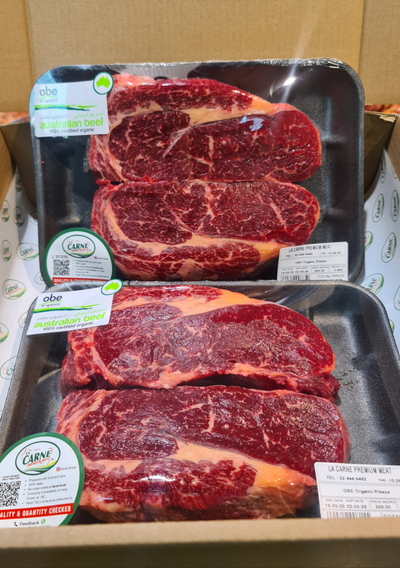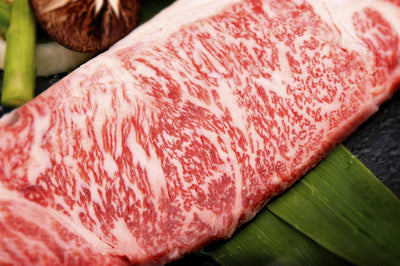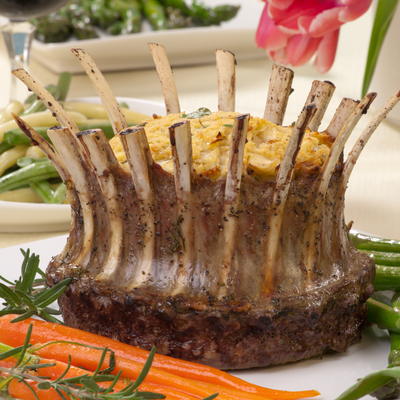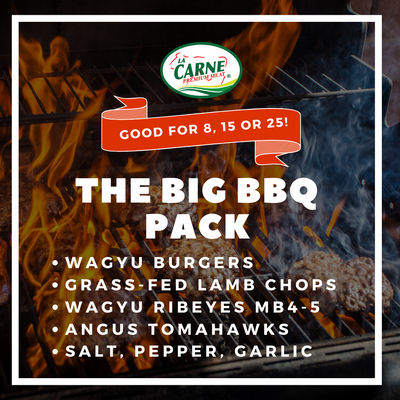101 Guide on How to Choose the Right Meat Cut
Have you ever spent hours cooking a meal only to find the meat is tough, chewy, or just doesn’t taste right? It’s frustrating, isn’t it? The truth is that choosing the wrong cut of meat can ruin even the best recipes. Whether you're grilling, roasting, or making a stew, picking the right cut ensures your meal is delicious. Let’s break it down so it’s easy to understand, even if you’re new to cooking!
The good news is that finding the perfect meat cut doesn’t have to be overwhelming. By understanding a few basics about how different cuts behave during cooking, you can save yourself time, effort, and disappointment. From tender steaks that cook in minutes to hearty cuts that need hours of slow cooking, there’s a cut of meat for every dish—and it’s easier to choose than you might think.
Understand the Cuts of Meat
Animals like cows and lambs are divided into different sections, each offering unique cuts of meat. These cuts are grouped into two categories: tender cuts and tough cuts.
-
Tender cuts come from muscles that aren’t used much, like the back or ribs. These muscles stay soft because they don’t do heavy lifting, making the meat naturally tender and juicy.
Cuts like ribeye, tenderloin, and sirloin are prized for their flavour and texture, often requiring only simple seasoning to shine. These cuts cook quickly on high heat, making them ideal for grilling, frying, or pan-searing. Whether you’re preparing a steak dinner or a quick stir-fry, tender cuts deliver a melt-in-your-mouth experience with minimal effort.
-
Tough cuts, on the other hand, come from hardworking muscles such as the shoulder or legs. These cuts are packed with connective tissues, which may make them seem less appealing at first glance. However, with slow cooking methods like braising, simmering, or roasting, the fibres break down, releasing rich, deep flavours.
Cuts like brisket, chuck, and shank are perfect for hearty stews, slow-cooked curries, or comforting soups. While they take more time to cook, the results are worth it—tender, flavour-packed meat that enhances any dish.
Match the Cut to Your Cooking Style
The way you cook meat should guide your choice of cut. Each cooking method interacts differently with the texture, fat content, and connective tissues in the meat, so matching the cut to the technique ensures the best results. Here’s a detailed guide to help you choose the right cut for your cooking style:
Quick Cooking Methods (Like Frying or Grilling)
Quick cooking methods involve high heat and short cooking times, making tender cuts the ideal choice. These cuts come from parts of the animal that don’t do much work, meaning the muscle fibres are naturally soft and don’t require prolonged cooking.
-
Steaks like ribeye or sirloin are perfect for grilling or pan-searing, offering rich marbling that melts into the meat, adding flavour and juiciness.
-
Chops, such as lamb or pork chops, are quick to cook and develop a beautiful caramelised crust when exposed to high heat.
-
Minced meats cook evenly and are perfect for simple, healthy meals.
Season these cuts lightly with salt, pepper, or a quick marinade to let their natural flavours shine. Overcooking can dry them out, so keep an eye on the heat and cooking time.
Low cooking Methods (Like Braising or Simmering)
Slow cooking is perfect for tougher cuts of meat, which have more connective tissue and collagen. These cuts come from muscles that do a lot of work, like the shoulders, legs, or brisket. When cooked slowly with moist heat, the connective tissue breaks down into gelatin, creating tender, melt-in-your-mouth meat with deep flavours.
-
Brisket is a classic choice for braising or smoking, ideal for stews or barbecues.
-
Oxtail is perfect for rich, hearty soups and stews, with the bone adding extra flavour.
-
Chuck works well in slow-cooked dishes like curries or casseroles, absorbing the spices beautifully.
For these cuts, add plenty of liquid (like stock, wine, or tomatoes), and cook them low and slow to achieve the best results. These methods allow the meat to soften and the flavours to deepen, making them ideal for comforting, hearty meals.
Roasting
Roasting is a dry-heat method best suited for larger cuts of meat that benefit from a golden, crispy exterior and a juicy, tender interior. The meat is cooked in the oven at a high or moderate temperature, often seasoned or marinated beforehand to enhance flavour.
-
Leg of Lamb is perfect for a Sunday roast or special occasion, offering tender, flavourful slices when cooked to medium rare.
-
Beef Rib Roast is a showstopper for holiday meals, with its marbling creating a juicy, flavourful centre.
Roasting larger cuts often involves a few key steps: seasoning or marinating the meat, searing it to lock in juices, and then cooking it evenly in the oven. A meat thermometer is helpful to ensure it’s cooked to perfection.
The Right Cut for Every Recipe
No matter the method, there’s a cut of meat that fits the job. If you’re not sure, ask your meat suppliers for advice or explore the convenience of an online meat supply to Sharjah, Abu Dhabi and beyond, where you can browse a wide selection of cuts tailored to your needs. Matching the cut to the cooking style guarantees meals that are not only delicious but also perfectly textured and packed with flavour.
Look for Quality
When buying meat, it’s important to know what to look for to ensure you’re getting the freshest, highest-quality product. A quick visual and physical check can save you from unpleasant surprises later in the kitchen. Here are the key factors to keep in mind:
-
Check the Colour: Fresh meat should have a vibrant, natural hue. Beef should be a rich, bright red, while lamb tends to have a deep pink colour. For poultry, look for a pale pink or slightly yellowish tint, depending on the type. Avoid meat with greyish or brown spots, as these could be signs of ageing or improper storage.
-
Feel the Texture: Fresh meat feels firm and slightly springy when you touch it. Press it gently with your finger; if it bounces back, it’s a good sign. Avoid meat that feels sticky, slimy, or overly soft, as these are indicators of spoilage or poor handling.
-
Smell the Meat: A clean, fresh smell is essential. While all raw meat has a distinct scent, it should never smell sour, ammonia-like, or unpleasant. If the odour seems off, it’s best to steer clear.
-
Ask Your Meat Suppliers: Don’t hesitate to ask questions. Reliable meat suppliers in Sharjah, Abu Dhabi and beyond are knowledgeable and can help you choose the best cuts for your recipe. They can also inform you about the meat’s origin, how it was stored, and how recently it was processed. Building a good relationship with your supplier ensures you’ll always get fresh, high-quality meat that suits your needs.
By paying attention to these details, you can confidently pick fresh, flavourful cuts every time, whether you’re shopping in-store or using an online meat supply to Sharjah.
Choose Convenience with Online Options
If you don’t have time to visit the butcher, you can get fresh, high-quality meat delivered right to your door. Many reliable services offer online meat supply to Sharjah, ensuring you receive clean, well-packaged cuts at your convenience.
To Summarise…
Don’t hesitate to experiment with different cuts. Trying something new can introduce you to exciting flavours and cooking styles. With the right cut and a bit of care, your meals will always turn out fantastic!
Cooking with confidence starts with choosing the perfect cut of meat.
We’re offering free delivery all over the UAE with no minimum order requirement. So what are you waiting for? Order your favourite cut from La Carne, grab your apron, and let’s get cooking.
Love,
La Carne




















Leave a comment